
The Next Trillion Dollar Wave - AI Narrative in Crypto: Who Are the Top Players?
Dec 12, 2024 21:40
Written by TechFlow
Blast is back in the spotlight.
On January 17th, Blast announced the launch of their testnet along with a month-long "Big Bang" incentive program. This program is designed to encourage developers to actively create applications within the Blast ecosystem. Competitions will be held with specific rules, and winning projects will receive Blast token airdrops, as well as opportunities to connect with top investors.
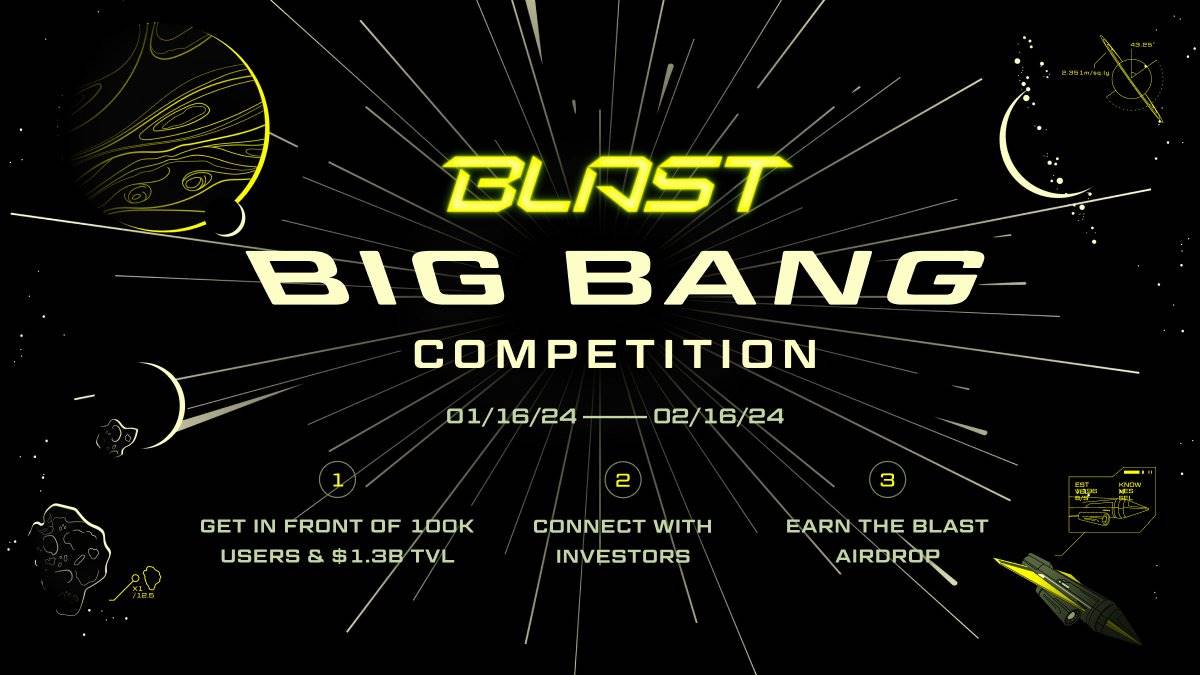
What's more important is that this incentive program feels like a warm-up for the main event: the Blast mainnet launch. The audience, made up of users that Blast has attracted over the past few months, is eagerly waiting for new projects to launch and anticipating the next big wave of liquidity.
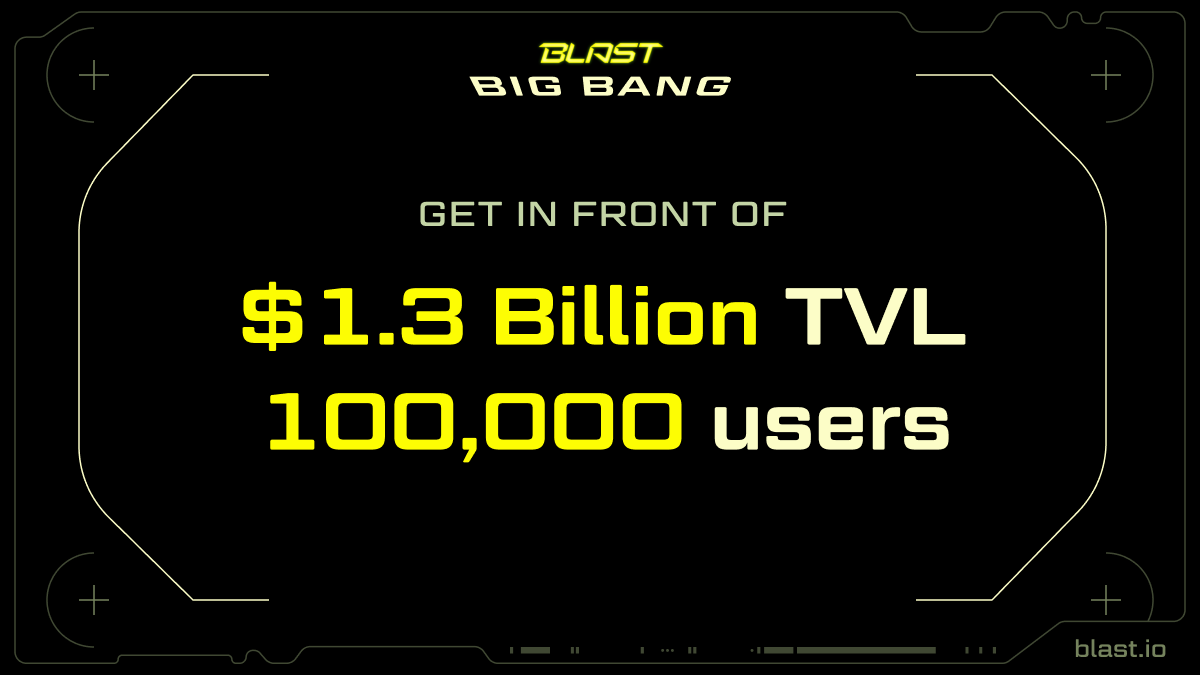
Launched by Blur founder Pacman, Blast L2 has been a hot topic since it was announced last November. With built-in revenue, backing from Paradigm, and Blur's successful track record, it’s no wonder it’s generating so much buzz and controversy.
Blast's ability to quickly attract users and liquidity has been a major talking point in the industry.
Just days after its launch last November, Blast's TVL (Total Value Locked) shot up to over $500 million, making competitors break a sweat. The CEO of Arbitrum's parent company even tweeted, "We created this monster."
Now, that monster has grown even bigger.
In just about two months, Blast has amassed a TVL of $1.3 billion and over 100,000 users. Considering Blast is still in its early stages, this is impressive. For comparison, the long-established Arbitrum has a TVL of $2.6 billion, only twice that of Blast.

Not only has Blast attracted users, but it's also reaching out to developers with enticing offers.
The Big Bang testnet program provides new projects with a compelling package: finding users, securing funding, and building valuable connections. This offer might be hard for new projects to resist.
In the world of crypto, Blast has really figured out how to nail incentives.
Let's dive into the details of the Big Bang testnet incentive program.
Imagine L2 as a stage, where users are the audience and projects are the performers.
For Blast, the stage host, there are at least two interconnected challenges:
Promising the audience there will be performances, while promising the performers there will be an audience.
This is the common dilemma faced by any platform project: how to attract resources when you have neither users nor projects, and both might be with your competitors.
Blast's solution is straightforward, primitive, yet effective: profit, profit, and more profit.
Although the L2 mainnet isn't live yet, Blast openly promises users that depositing assets will earn them staking rewards in ETH and interest in stablecoins. This alone is enough to attract crypto users focused on profits, not to mention the potential for future airdrop rewards.
On the other side, Blast uses its solid TVL to confidently attract projects to build on their platform, openly promising developers airdrop rewards as well.
A testnet with evenly split rewards – a strategy that benefits everyone.
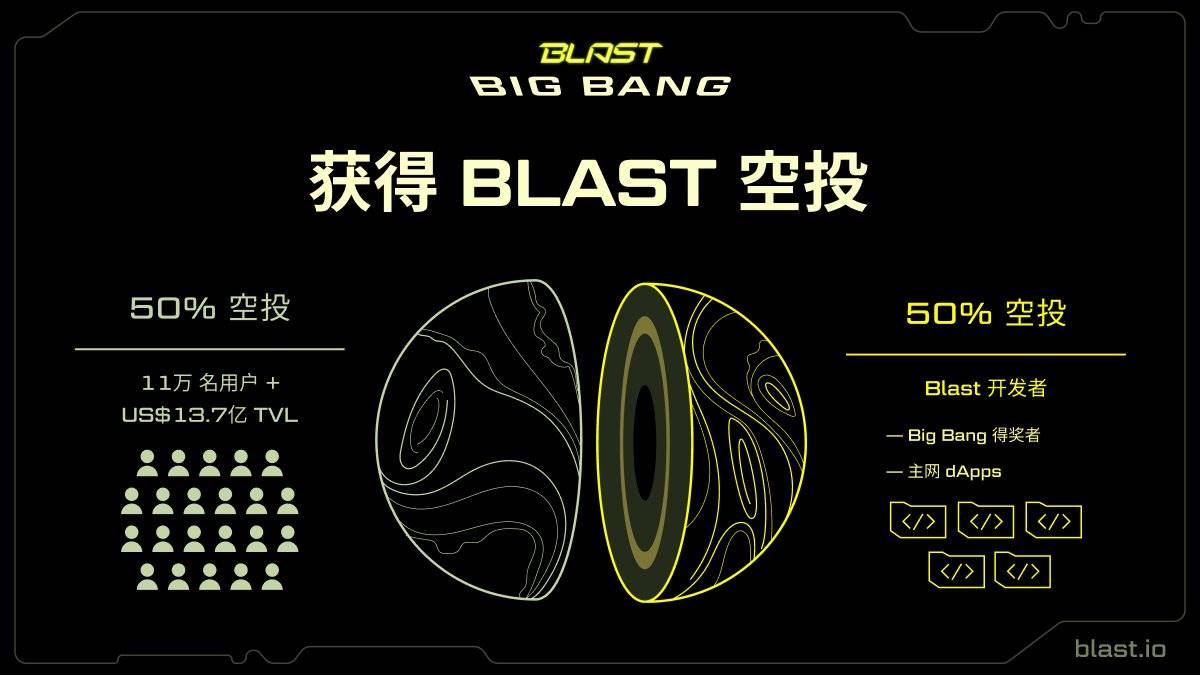
All Blast airdrops are split evenly: half goes to winning projects and mainnet application developers, and the other half to users who provide liquidity on Blast.
Airdrops usually target retail investors, so it's unusual to see them directly rewarding developers. However, big rewards attract brave innovators. In a landscape where other L2 ecosystems are already established with dominant projects, developing on Blast offers three major advantages: airdrops, users, and untapped potential. It's a win-win situation.
According to Blast’s official information, they are encouraging projects in eight categories: DeFi, NFT, social, gaming, infrastructure, and more. These categories cover the areas where liquidity tends to flow in the crypto market. With such strong incentives, it's only a matter of time before excellent projects emerge from Blast.
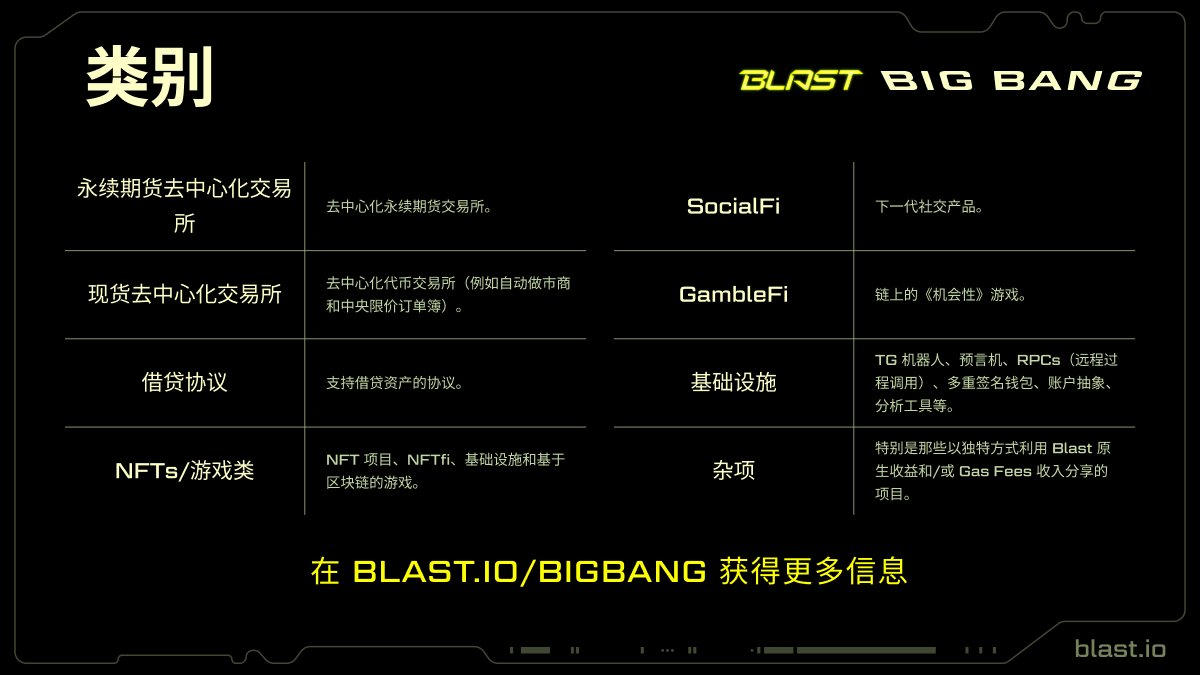
Blast is clearly eager to attract talent, and they're maximizing the value of their team and brand. Winning projects will have the chance to connect with key members of the Blur team. While one conversation might not solve all problems, the networking and community benefits are invaluable for project development, business development, and gathering insights.
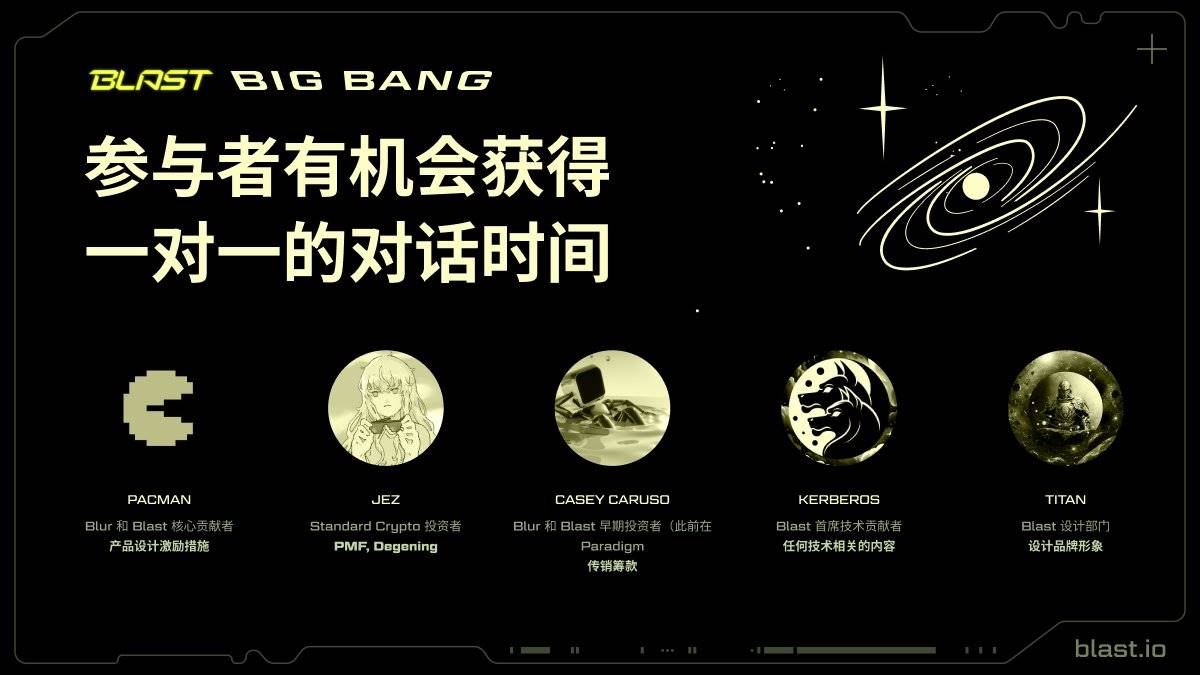
With generous airdrops and resources on offer, Blast is making an enticing and transparent pitch. They seem to understand exactly what it takes to effectively engage developers and users in the crypto market.
Blast’s testnet incentive program, called "Big Bang," lives up to its name, but it's the operational strategy that's truly groundbreaking.
Consider how previous L2s have tried to attract users and developers:
They offered airdrops, but the rules were often unclear and not immediately transparent. They provided developer incentives, but these didn't directly involve retail users. Instead, they converted to token emissions to attract users later on.
Most importantly, they focused heavily on technical narratives, highlighting their OP/ZK technology's capabilities, lower gas fees, and faster performance.
While these technical details are important, they aren't the deciding factor for most users and developers.
With dozens of L2s offering similar technology, what users and developers care about most is the benefits they receive.
Blast’s approach flips the script: it doesn't just rely on technological superiority; it attracts users and developers with clear, tangible rewards.
Straightforward, efficient, and practical.
First, Blast attracts users and liquidity with predictable rewards, ETH staking and stablecoin interest. Then, it uses this liquidity to attract developers.
No user can resist the lure of solid returns, and no developer can ignore a platform with a large user base.
Using incentives to leverage both sides' behavior can quickly build momentum and achieve a successful launch for a new L2.
Critics may argue that users drawn by incentives aren't sustainable or loyal, and that this approach lacks legitimacy and technological innovation. However, in the crypto world, results matter. If the incentives drive business success, users profit, projects gain traction, and the L2 earns transaction fees, everyone benefits, and the critics are silenced.
The remaining skeptics will likely be competitors and those who missed out on the profits. This logic mirrors Blur's successful challenge to Opensea.
Blur demonstrated how a new NFT platform could gain traction through strategic incentives. Blast seems to be applying a similar strategy to capture the L2 market:
Offering incentives to attract both users and developers.
More significantly, transforming itself into an L2 with built-in Launchpad capabilities.
Need liquidity? Blast has it. Want incentives? Blast offers them. Need users? Blast has plenty.
For a new project, there's every reason to choose Blast. As "launching on Blast" becomes a common sentiment, Blast will solidify its role as a Launchpad, attracting even more eager projects.
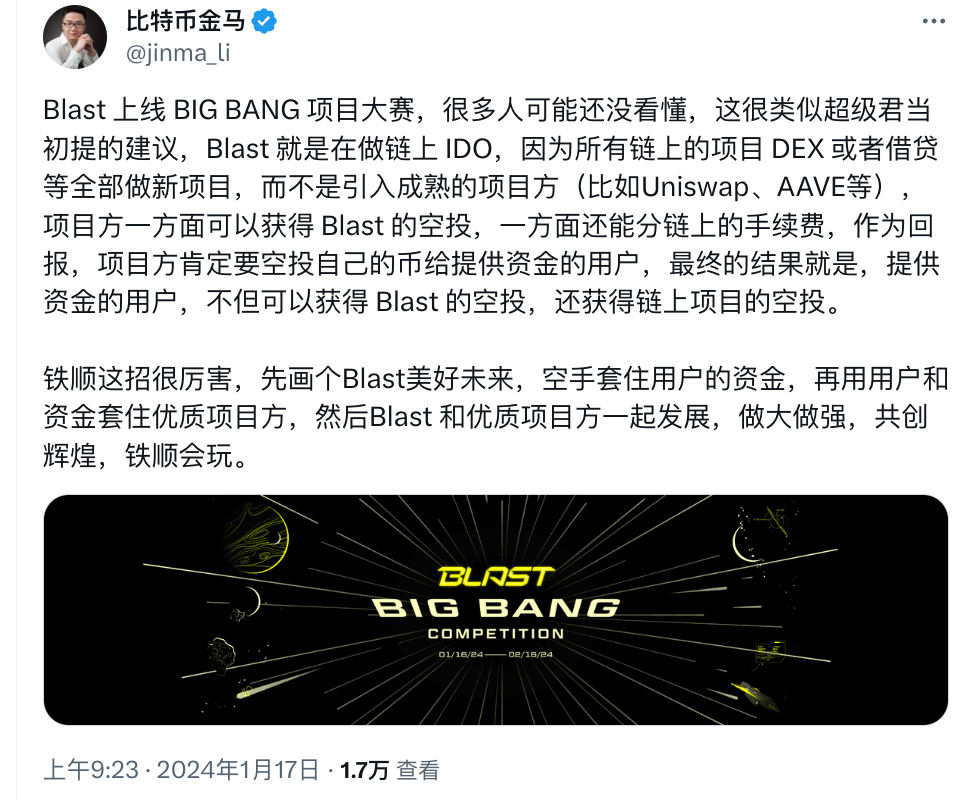
In the new cycle, fancy technologies seem to be losing their appeal. Users now prefer projects that are straightforward, easy to understand, and offer direct incentives. This has led to the rise of Ordinals, VC anxiety, and more projects joining the Ordinals frenzy or turning to the Bitcoin ecosystem as a practical choice when they can't compete.
Could L2 space also be experiencing a shift towards more practical and user-friendly operations? Blast seems to be leading the way.
Interestingly, the narratives in the crypto world are always changing, teams are evolving, and strategies are shifting;
But one thing remains constant: the deep understanding of human nature.
Recommendation
VC
The Great Crypto Betrayal: VCs Fight Back Against Zombie Projects
Oct 10, 2024 15:54

Exploring the Real Japanese Crypto Market: Coexistence of Isolation and Contradiction, Where are the Opportunities?
Jun 06, 2024 18:47

Understanding IMO: How Tokenizing AI Models is Crypto Worlds New Way to Embrace AI
Jun 06, 2024 19:09